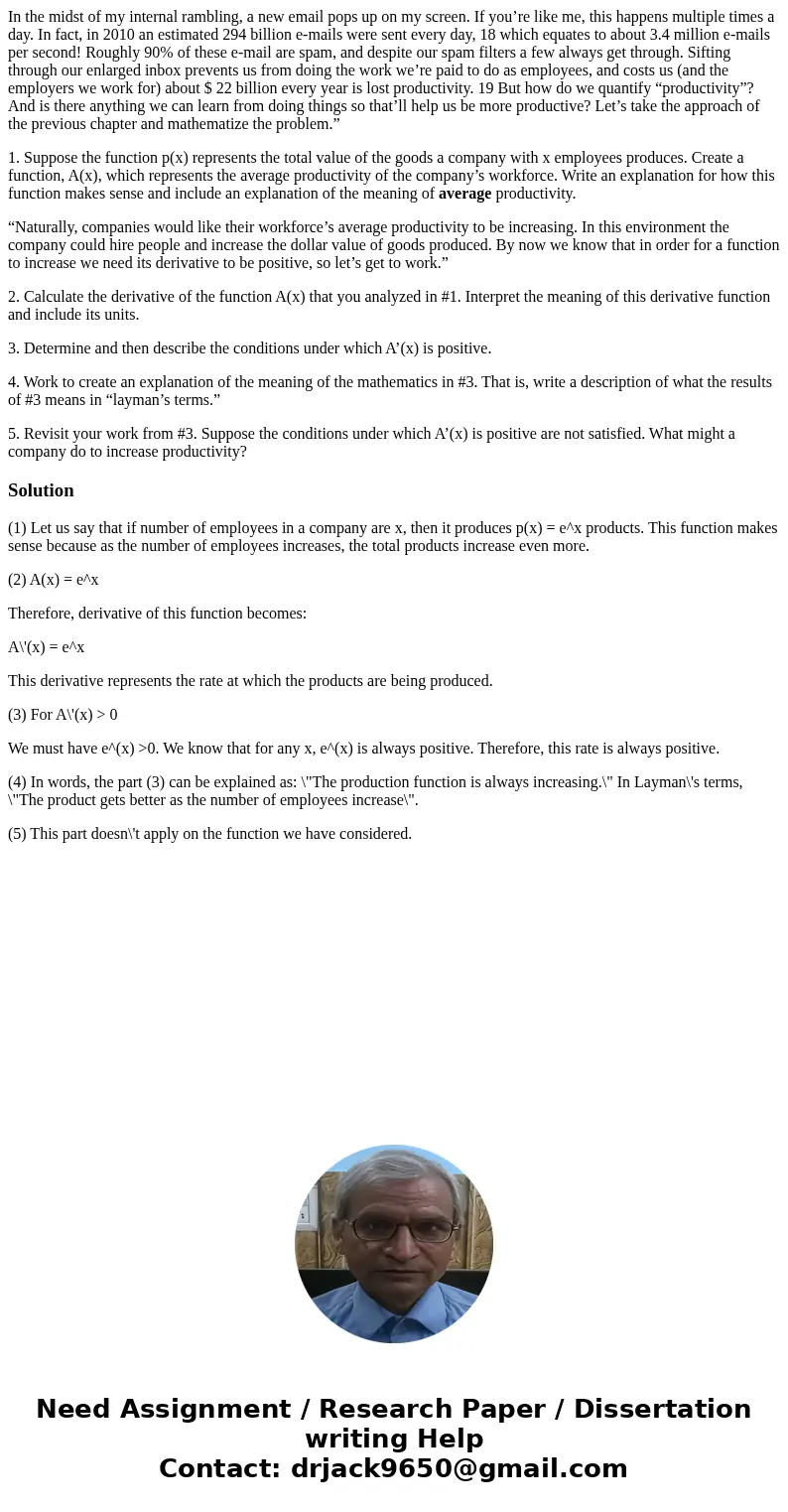In the midst of my internal rambling a new email pops up on
In the midst of my internal rambling, a new email pops up on my screen. If you’re like me, this happens multiple times a day. In fact, in 2010 an estimated 294 billion e-mails were sent every day, 18 which equates to about 3.4 million e-mails per second! Roughly 90% of these e-mail are spam, and despite our spam filters a few always get through. Sifting through our enlarged inbox prevents us from doing the work we’re paid to do as employees, and costs us (and the employers we work for) about $ 22 billion every year is lost productivity. 19 But how do we quantify “productivity”? And is there anything we can learn from doing things so that’ll help us be more productive? Let’s take the approach of the previous chapter and mathematize the problem.”
1. Suppose the function p(x) represents the total value of the goods a company with x employees produces. Create a function, A(x), which represents the average productivity of the company’s workforce. Write an explanation for how this function makes sense and include an explanation of the meaning of average productivity.
“Naturally, companies would like their workforce’s average productivity to be increasing. In this environment the company could hire people and increase the dollar value of goods produced. By now we know that in order for a function to increase we need its derivative to be positive, so let’s get to work.”
2. Calculate the derivative of the function A(x) that you analyzed in #1. Interpret the meaning of this derivative function and include its units.
3. Determine and then describe the conditions under which A’(x) is positive.
4. Work to create an explanation of the meaning of the mathematics in #3. That is, write a description of what the results of #3 means in “layman’s terms.”
5. Revisit your work from #3. Suppose the conditions under which A’(x) is positive are not satisfied. What might a company do to increase productivity?
Solution
(1) Let us say that if number of employees in a company are x, then it produces p(x) = e^x products. This function makes sense because as the number of employees increases, the total products increase even more.
(2) A(x) = e^x
Therefore, derivative of this function becomes:
A\'(x) = e^x
This derivative represents the rate at which the products are being produced.
(3) For A\'(x) > 0
We must have e^(x) >0. We know that for any x, e^(x) is always positive. Therefore, this rate is always positive.
(4) In words, the part (3) can be explained as: \"The production function is always increasing.\" In Layman\'s terms, \"The product gets better as the number of employees increase\".
(5) This part doesn\'t apply on the function we have considered.

 Homework Sourse
Homework Sourse